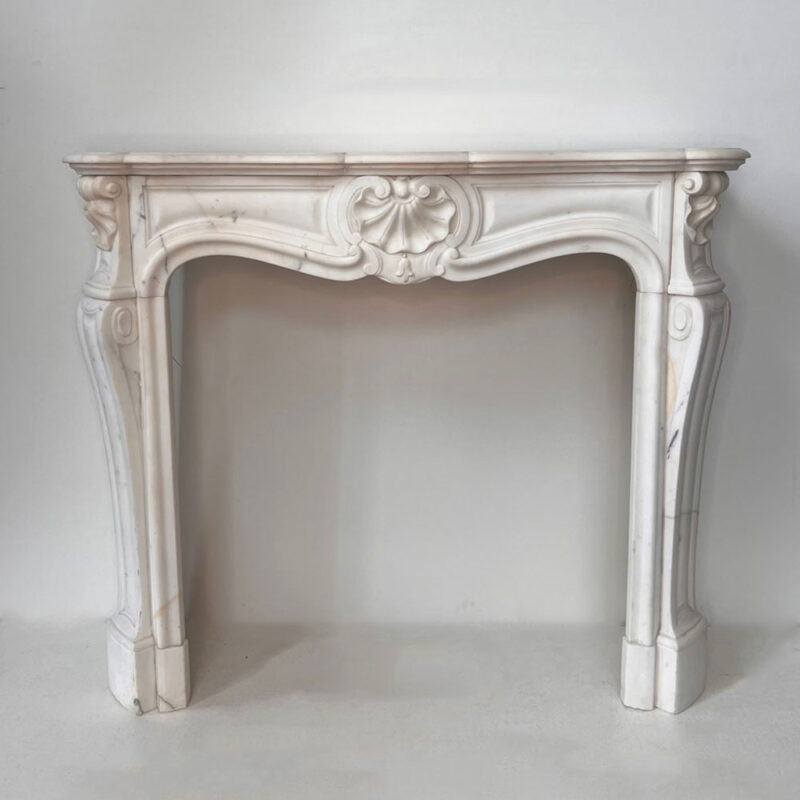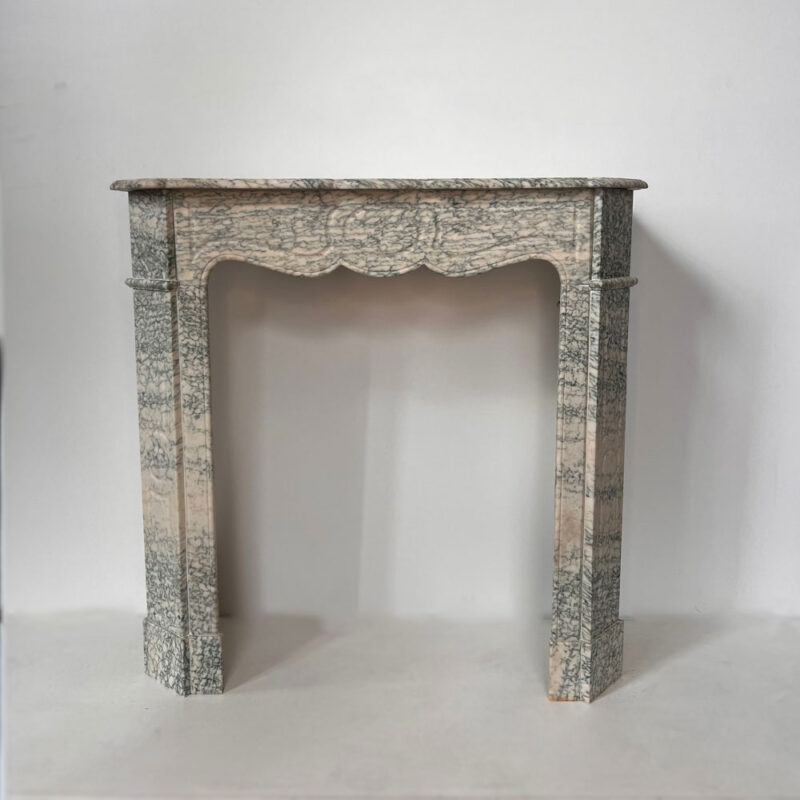As we have a large showroom with over two floors dedicated to Antique Fireplaces, we often get customers feeling a bit overwhelmed by the choice, asking our expert advice on what attributes they should be looking for when choosing a fireplace to represent a particular historical period. Here are a few pointers which will hopefully make your search a bit easier:
The Georgian Period
The Georgian era (1714 – 1820) was all about elaborate designs. Georgian fireplaces owe much to Robert Adam, the quintessential designer bringing classical designs inspired by his studies of ancient ruins. He was a master of detail, and the best of his work was executed in Statuary white marble, often with Sienna marble inlays. His designs included finely carved urns, foliage, scrolls, sphinxes, ram heads and figures, same as capital blocks and columns. His attention to detail was carried over to designing intricate freestanding fire grates to complement the wow factor of the Georgian fireplace.
The Regency Period
In the Regency era (1800 – 1830), simple marble fireplace designs with narrower legs were introduced, often with contrasting marble inlays and occasionally decorated with embellishments. One famous designer from this period was Sir John Soane and his fireplaces include low mantels with minimal mouldings showing unique versions of neo-classicism architecture. Placing of an over mantel mirror above the fireplace was typical during this time, to reflect natural or candle light around the room.
The Victorian Period
During the Victorian era (1837 – 1901), fireplaces were the heart of the home and represented a statement of prosperity and abundance. The main living room would typically have a white marble mantelpiece with a black cast iron insert. Slate and cast iron surrounds were also common around the 1880’s and were often painted or enamelled with elaborate floral designs. The cast iron inserts were flanked with decorative ceramic tiles in a wide range of colours and floral motifs or had a decorative arch, often with a highlighted pattern.
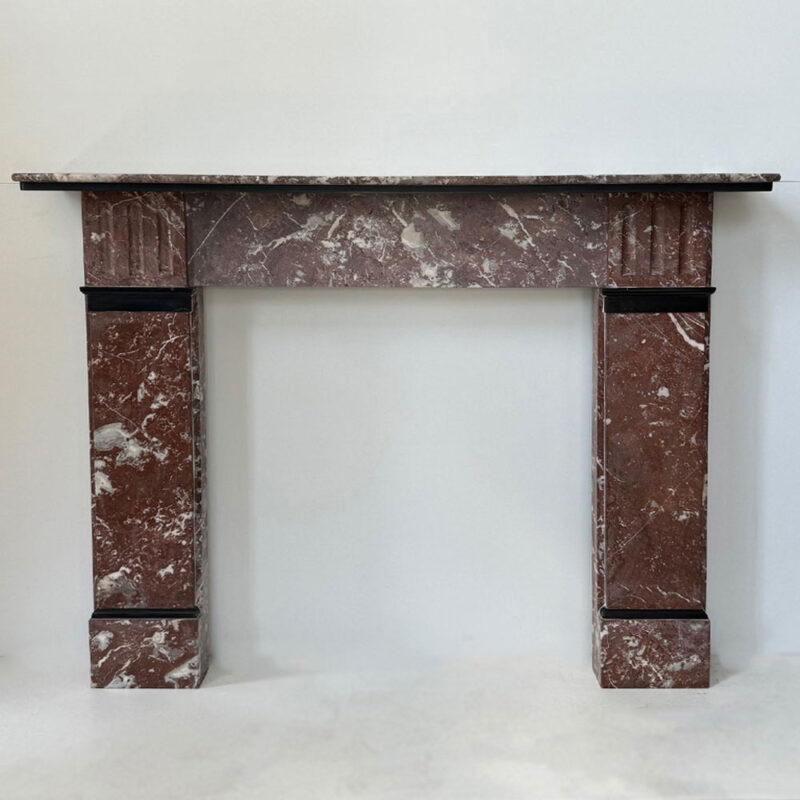
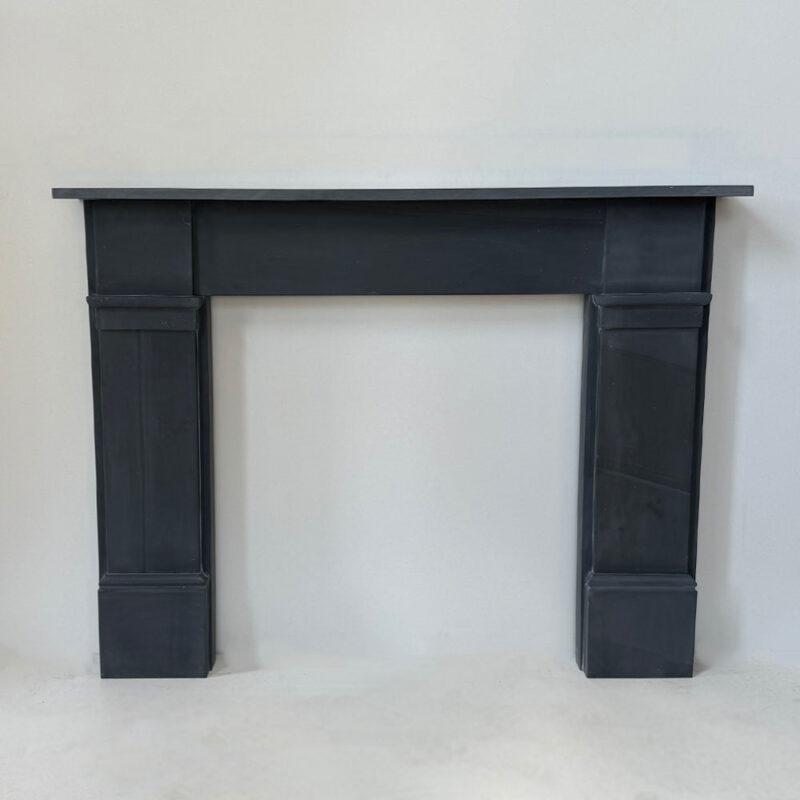
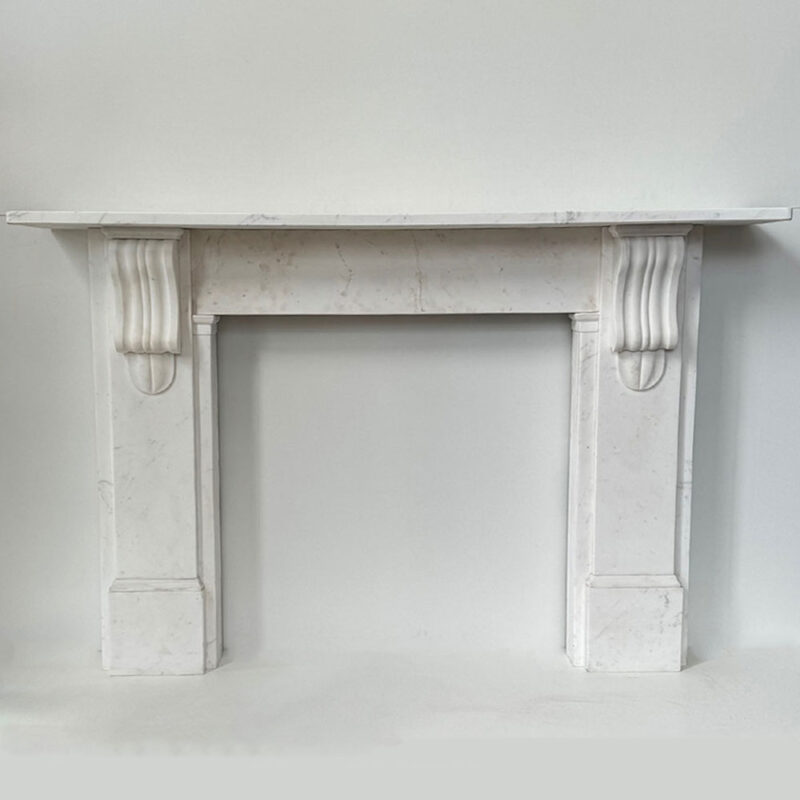
Arts and Crafts
The Arts and Crafts (1880 – 1920) movement was a reaction to mass produced Victorian goods with poor design. It was a revolution in an attempt to revive hand craft and honest workmanship. William Morris (better known for his fabrics and wallpaper designs) had a huge influence on fireplace design during this era. His interest in medieval inglenook fireplace was the inspiration for many of his designs. The dominating inglenook frames would be lined with colourful tiles, incorporating embossed copper or brass hood with wrought iron grate and brass firedogs.
Art Nouveau
Art Nouveau fireplaces (1890 – 1910) were heavily influenced by designer Charles Rennie MacKintosh who developed his own style with strong right angles and floral inspired designs. Cast iron inserts and combinations would often be flanked with coloured tiles with whip lash curves, long sinuous lines that turned back on themselves and often featured tulips. Art Nouveau fireplace tiles were produced with embossed tube line designs which were hand painted and used to decorate both the insert and the hearth. Large wooden over mantels with mirrors were common, often in oak or painted timber, with a small shelf midway up above the fire and an impressive cornice above.
The Edwardian Period
The Edwardian era (1901 – 1910) saw timber mantels coming into fashion, often painted white and with plain green tiles in cast iron inserts, and a brass or a copper hood. Typically the flowery motifs of the Victorian tiles would have been replaced with tiled back panels, with matching hearth tiles fitted flush with the floorboards. A fender around the hearth would have also been a common feature. Whilst white and Carrara marble mantels were still popular in the Edwardian period, Rouge marble mantels were introduced and the detailing changed from round corbels to square or fluted, and often featuring contrasting marble or slate adornments.
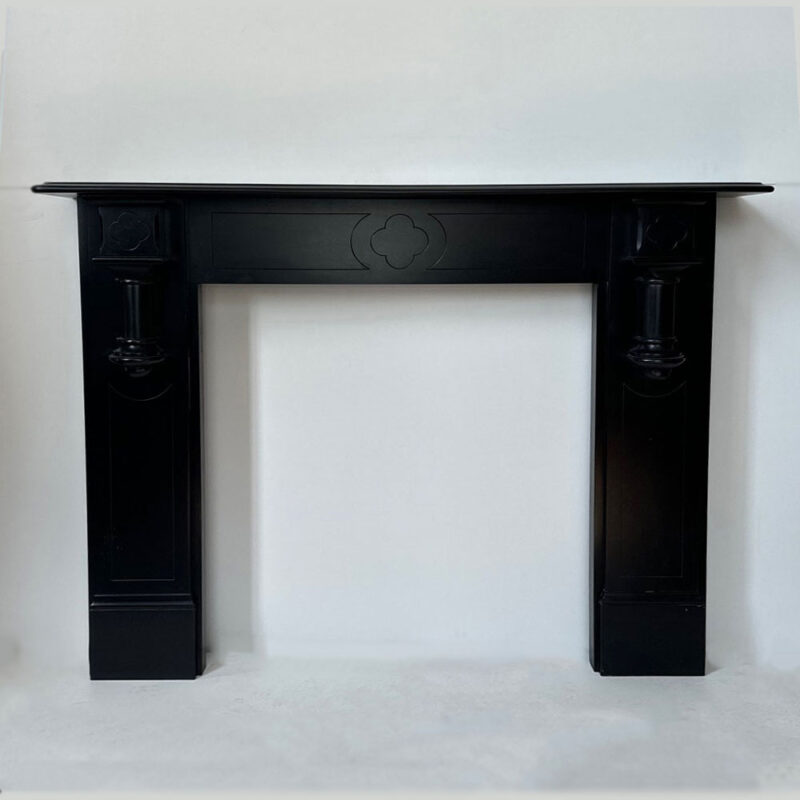
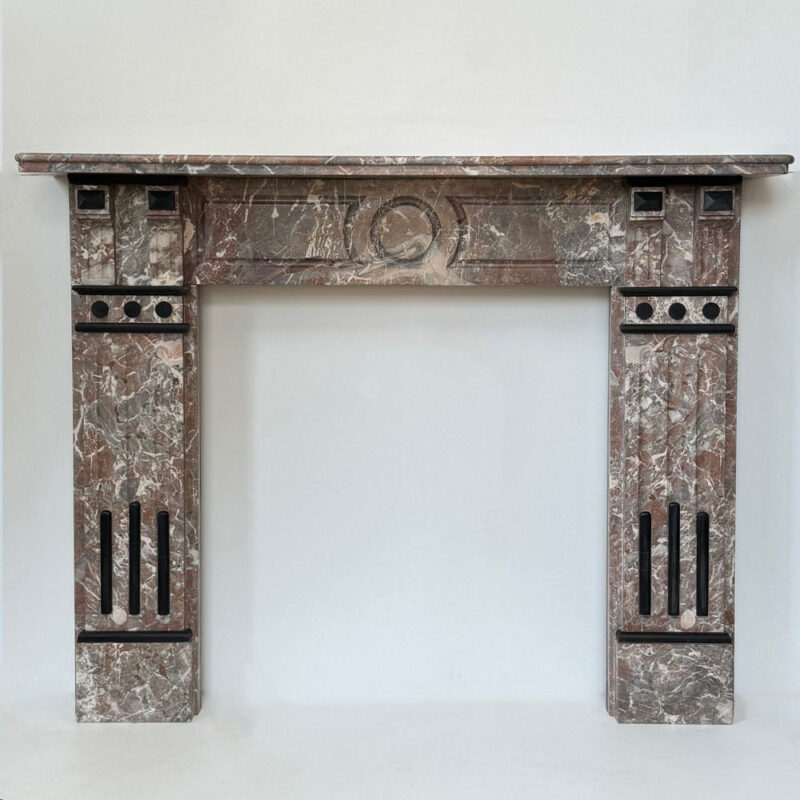
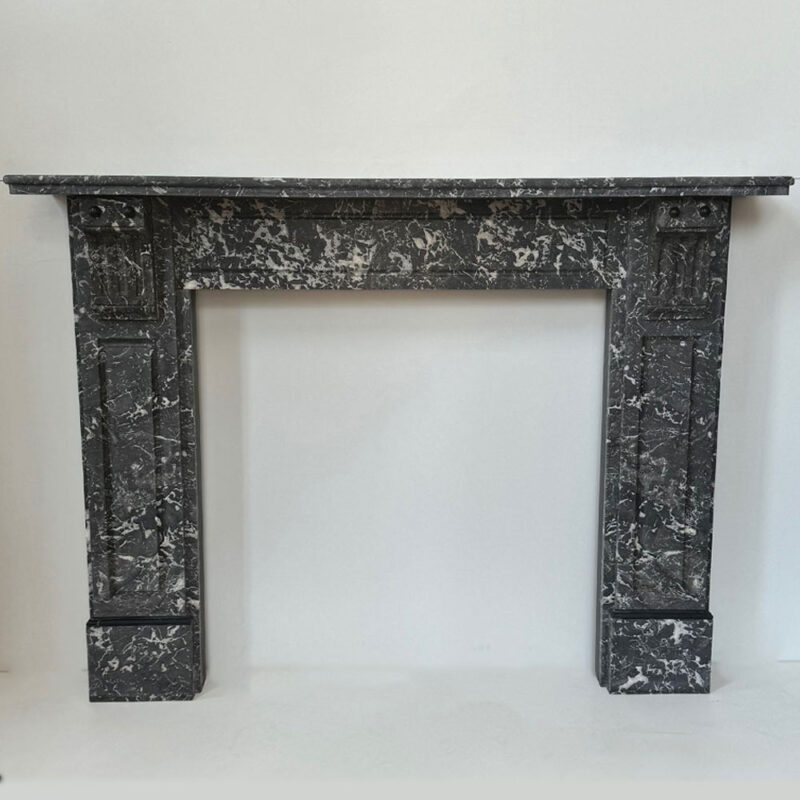
Art Deco
The Art Deco style (1920 – 1930) is characterised by rich colours and bold geometry shapes and is the most enduring movement in home design. Clean lines, sharp edges and symmetry can be seen in fireplace designs, with elongated mantelpieces and details such as niches and recesses. Tiled fireplace surrounds with a stepped top, often in a beige colour with matching tiled hearth (often referred to as slabbed fireplaces) were a typical feature of the Art Deco period.
French Style
The fireplace as we know it derives from Italy during the 16th century where the chimney piece projects into the room and is surrounded with ornate carving. In France however, fireplaces were being produced lower and wider in the Rococo style, in white, Carrara and more exotic marble. With curtained shelves and flamboyant ornamentation, having a French Style mantelpiece will make a strong neoclassical statement, ideally complemented by tall over mantel mirror, wall panelling to the sides and a dado rail.
